Type Tokamak Major radius 2.96 m Plasma volume 100 m | Operation date 1984 - present Minor Radius 1.25–2.10 m Magnetic field 3.45 T (toroidal) | |
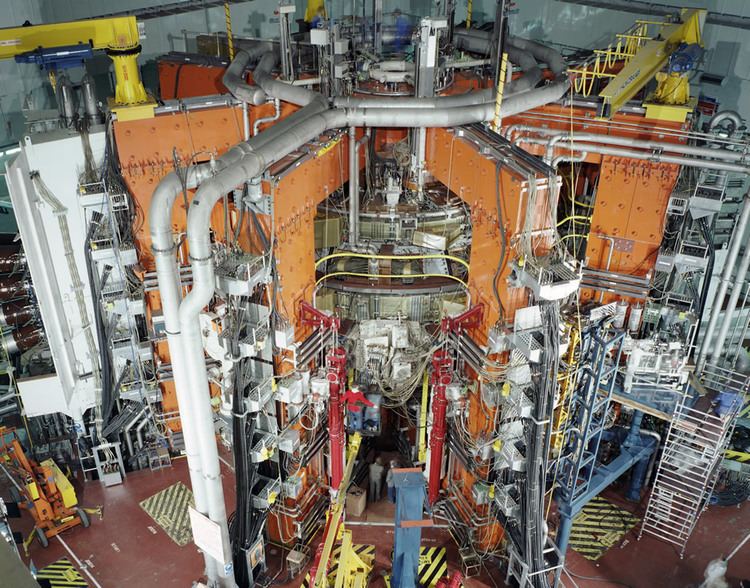 | ||
JET, the Joint European Torus, is the world's largest operational magnetic confinement plasma physics experiment, located at Culham Centre for Fusion Energy in Oxfordshire, UK. Based on a tokamak design, the fusion research facility is a joint European project with a main purpose of opening the way to future nuclear fusion grid energy. More advanced facilities are being developed to follow on the JET research, including the International Thermonuclear Experimental Reactor and the Demonstration Power Station.
Contents
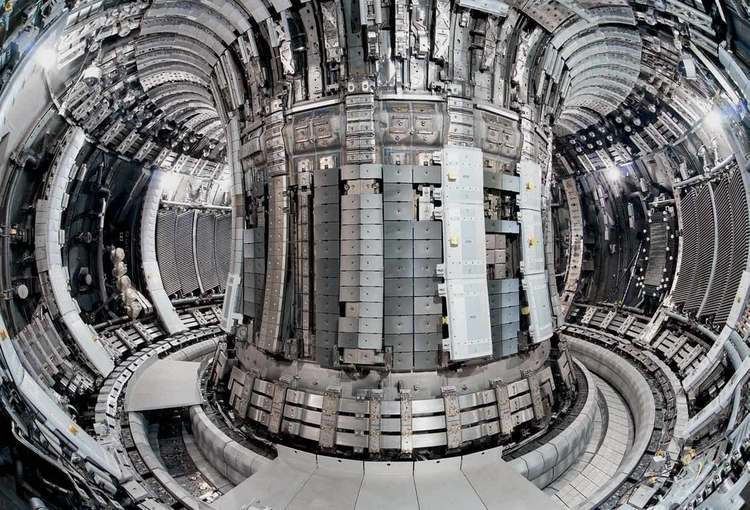
Construction
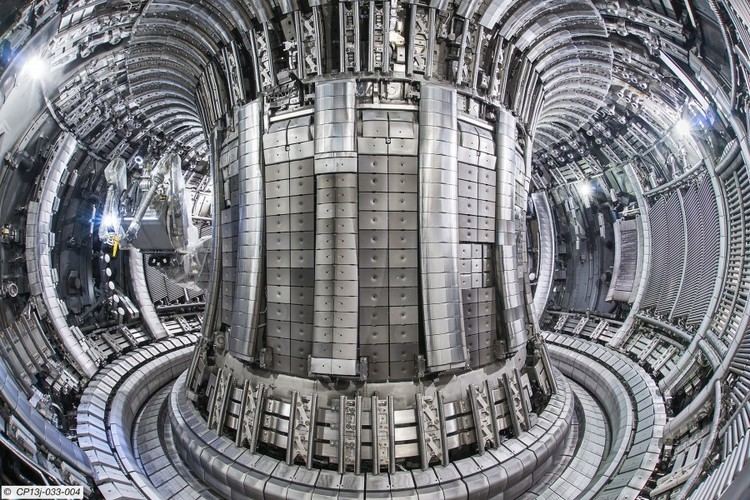
The JET facilities are situated on a former Navy airfield near Culham, Oxfordshire – RNAS Culham (HMS Hornbill), in the UK. They are located alongside Culham Centre for Fusion Energy (the UK's fusion research laboratory, which opened in 1965). The construction of the buildings which house the project was undertaken by Tarmac Construction, starting in 1978 with the Torus Hall being completed in January 1982. Construction of the JET machine itself began immediately after the completion of the Torus Hall, with the first plasma experiments in 1983. The cost was 198.8 Million European Units of Account (predecessor to the Euro) or 438 million in 2014 US dollars.
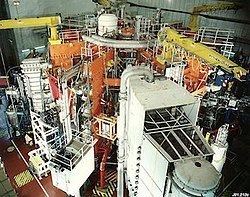
JET's power requirements during the plasma pulse are around 500 MW with peak in excess of 1000 MW. Because power draw from the main grid is limited to 575 MW, two large flywheel generators were constructed to provide this necessary power. Each 775-ton flywheel can spin up to 225 rpm and store 3.75 GJ. Each flywheel uses 8.8 MW to spin up and can generate 400 MW (briefly).
JET has a major radius of 3 meters and contains a total plasma volume of 90 cubic meters.
Operations
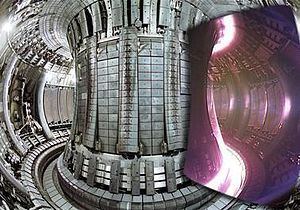
In 1970 the Council of the European Community decided in favour of a robust fusion programme and provided the necessary legal framework for a European fusion device to be developed. Three years later, the design work began for the JET machine. In 1977 the construction work began and at the end of the same year a former Fleet Air Arm airfield at Culham in the UK was selected as the site for the JET project. In 1978 the "JET Joint Undertaking" was established as a legal entity. Only five years later the construction was completed on time and on budget. On 25 June 1983 the very first JET plasma was achieved and on 9 April 1984 Queen Elizabeth II officially opened the facility.
On 9 November 1991 a Preliminary Tritium Experiment achieved the world’s first controlled release of fusion power.
Six years later, in 1997, another world record was achieved at JET: 16 megawatts of fusion power were produced.
In 1998 JET’s engineers developed a remote handling system with which, for the first time, it was possible to exchange certain components using artificial hands only. A “Remote Handling” system is, in general, an essential tool for any subsequent fusion power plant and especially for the International Thermonuclear Experimental Reactor (ITER). This Remote Handling system was later to lead on to become RACE (Remote Applications in Challenging Environments).
In 1999 the European Fusion Development Agreement (EFDA) was established with responsibility for the future collective use of JET.
JET operated throughout 2003, with the year culminating in experiments using small amounts of tritium.
In October 2009, a 15-month shutdown period was started, and improvements were made to the tokamak, including replacing carbon components in the vacuum vessel with tungsten and beryllium ones, to bring JET's components more in line with those planned for ITER. Heating power was also increased by 50%, bringing the neutral beam power available to the plasma up to 34MW, and diagnostic and control capabilities were improved. In total, over 86,000 components were changed in the torus during the shutdown. In mid-May 2011, the shutdown reached its end. The first experimental campaign after the installation of the “ITER-Like Wall” started on 2 September 2011.
On 14 July 2014 the European Commission signed a contract worth €283m for another 5-year extension so more advanced higher energy research can be performed at JET.
Future
Scientists intend to start ITER operations with a full tungsten divertor and are also planning fusion tests using Deuterium-Tritium plasmas for 2018: they hope to break their own record of 16 megawatts of fusion power. Beyond 2018, the future of JET is uncertain due to the UK decision in June 2016 to leave the EU.
